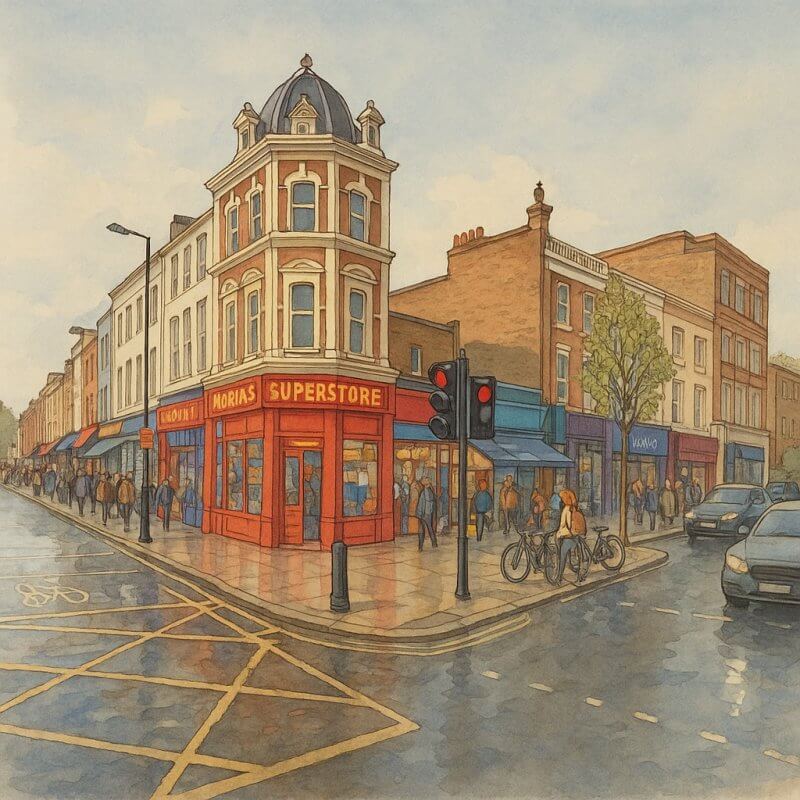
Paddington, London
Paddington, London: A Historic Gateway Full of Life and Connections
Where Tradition Meets Modern London
Located in the City of Westminster, Paddington is one of London's most recognized and important districts.Famed for its historic railway station and charming canals, Paddington offers visitors and locals a fascinating blend of old-world charm and modern vibrancy.
Where Paddington Is: A Map Overview
Paddington sits between two prominent areas of London: to the west of Marylebone and north of Hyde Park.Map of Paddington, London
- Paddington Station and Surroundings: This is the heart of transport, with Paddington Station, canals, hotels, and bustling streets like Praed Street.
- Paddington Residential Area: Stretching further north and west, this section includes attractive garden squares, townhouses, and quieter, leafy streets like Gloucester Terrace and Sussex Gardens.
The Size and Population of Paddington
Paddington covers an area of approximately 1.5 square miles (about 4 square kilometers). As of the latest available estimate (based on 2021 data), Paddington has a population of around 41,000 residents.This makes it a relatively dense, urban neighborhood typical of Central London.
Major Roads in Paddington
Several important roads run through Paddington, providing easy access around London and beyond:- Praed Street: The main artery running east-west through Paddington, home to many shops, hotels, and restaurants.
- Edgware Road: A major thoroughfare running north to south, linking Paddington with Marble Arch and the West End.
- Bishop’s Bridge Road: Connecting Paddington Basin to Westbourne Grove and Notting Hill.
- Sussex Gardens: A long avenue lined with hotels and residential buildings, connecting Lancaster Gate to Edgware Road.

Painting of Paddington (View full-size image here)
The History of Paddington
The name "Paddington" dates back to at least the 10th century, with the earliest known reference recorded in 1056.It is thought to derive from "Padintune," meaning "the village of Padda's people" — Padda likely being the name of an early landowner or tribal leader.
In the 19th century, Paddington underwent a major transformation with the opening of Paddington Station in 1854, designed by the great engineer Isambard Kingdom Brunel.
The development of the Grand Union Canal earlier in the 1800s also helped establish Paddington as a bustling hub for transport and trade.
Demographics of Paddington
Paddington is a true melting pot of cultures, languages, and backgrounds.According to recent census data:
- Approximately 60% of residents identify as White (including British, Irish, and other White backgrounds).
- About 20% identify as Asian or British Asian, with significant Arab and South Asian communities.
- Paddington also has notable Black, mixed-race, and other ethnic minority populations.
- Over half of the residents were born outside the UK, reflecting London's international character.
Real Estate Prices in Paddington
Paddington’s real estate market remains highly sought after, though it is often more affordable than neighboring Mayfair or Knightsbridge. As of early 2025:- The average property price in Paddington stands around £1,100,000.
- By comparison, the average across Greater London is about £720,000.
Important Buildings and Landmarks in Paddington
Paddington boasts several iconic landmarks and buildings:- Paddington Station: One of London’s great railway stations, linking the city with the West Country and Heathrow Airport.
- St Mary’s Hospital: A leading teaching hospital where Sir Alexander Fleming discovered penicillin in 1928.
- Paddington Basin: A beautifully redeveloped waterfront area with modern offices, restaurants, and public spaces.
- Little Venice: Just to the north, this picturesque network of canals is one of London’s hidden gems.
Characteristics of Paddington
Paddington is characterized by a unique blend of energy, history, and community spirit.Some of its key features include:
- International Connections: Thanks to Paddington Station and the Heathrow Express, the area is a major gateway to the world.
- Residential Calm: Despite its transport links, residential streets are leafy, calm, and filled with traditional London architecture.
- Cultural Diversity: A wealth of global restaurants, shops, and services reflect Paddington’s multi-ethnic makeup.
- Regeneration Projects: Areas like Paddington Basin have seen significant investment, adding modern flair to historic surroundings.
Nearest London Underground Stations
Paddington is exceptionally well-served by the London Underground:- Paddington Station: Served by the Bakerloo, Circle, District, and Hammersmith & City Lines.
- Edgware Road Station: Served by the Bakerloo Line and a separate Edgware Road station served by the Circle, District, and Hammersmith & City Lines.
- Lancaster Gate Station: Served by the Central Line, offering direct access to Oxford Street and the City.
- Royal Oak Station: Served by the Hammersmith & City Line, one stop west of Paddington.
Fun Facts About Paddington
Paddington is full of interesting tidbits that delight visitors and locals alike:- Paddington Bear: The beloved fictional bear from "darkest Peru" was named after Paddington Station, where he was found in Michael Bond’s famous books.
- Engineering Marvel: Paddington Station’s original design included one of the world’s first large-span iron and glass roofs — a Victorian marvel still admired today.
- Hidden Canals: Many first-time visitors are surprised to discover peaceful canal paths tucked behind the busy streets, perfect for waterside strolls.